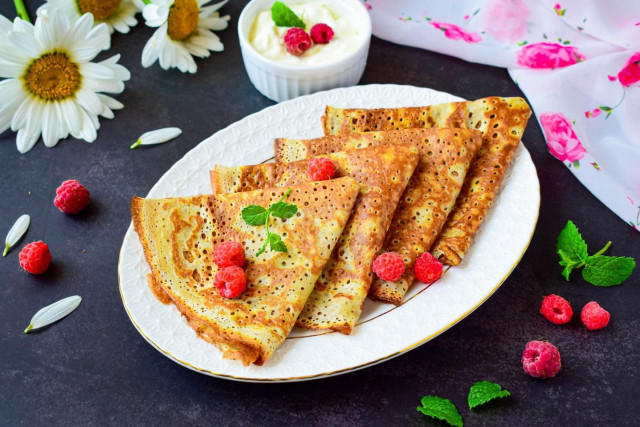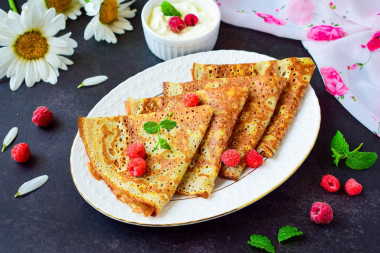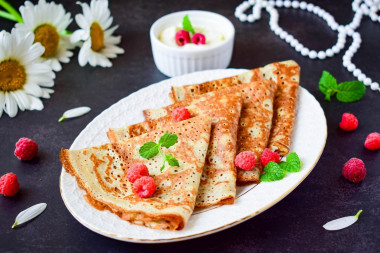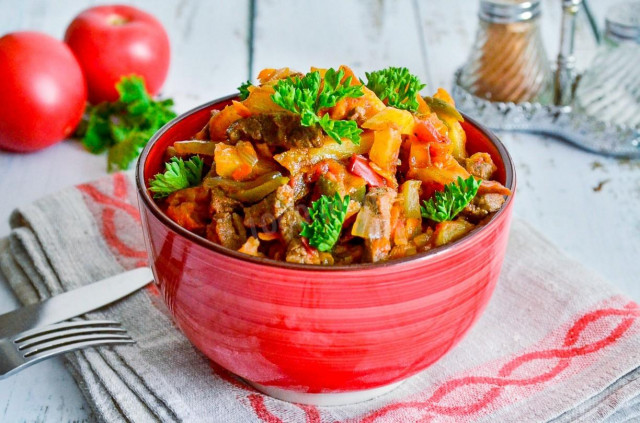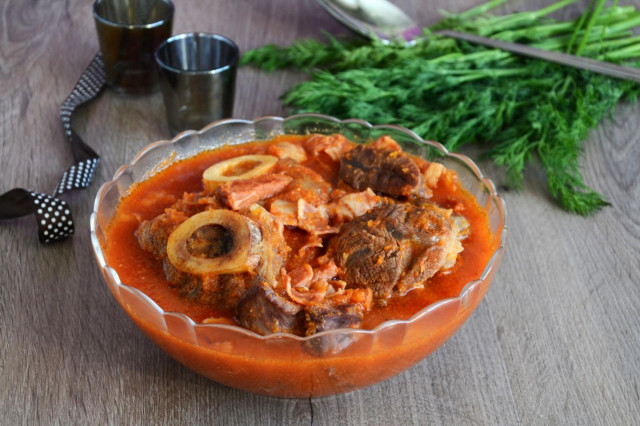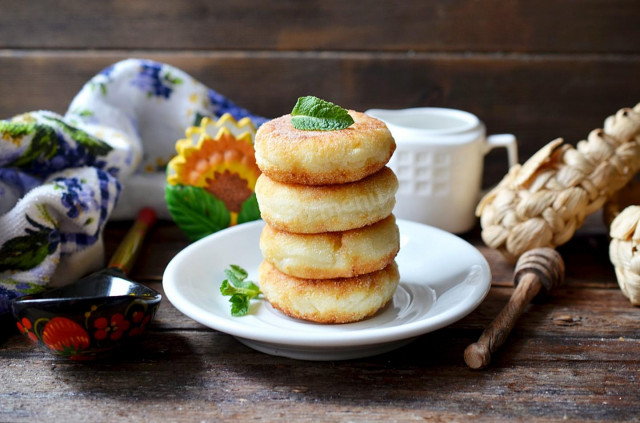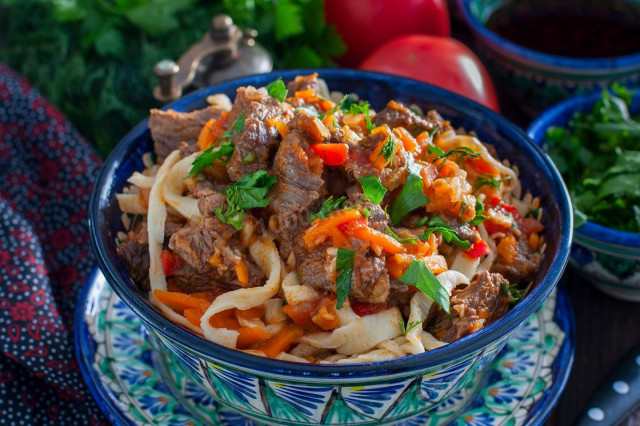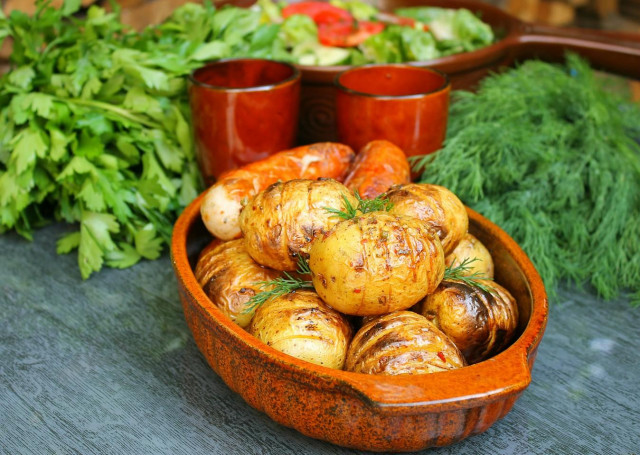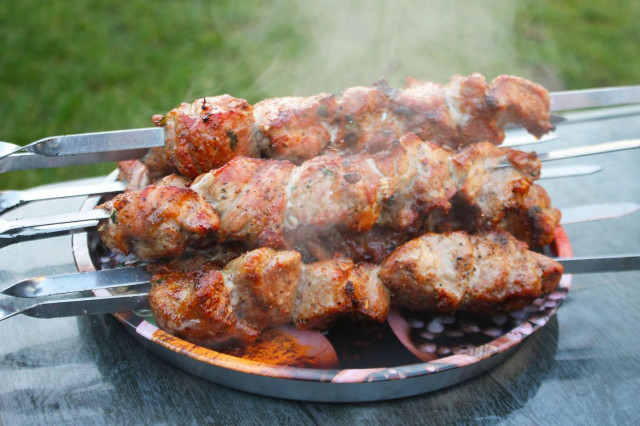Composition / ingredients
Step-by-step cooking
Step 1:
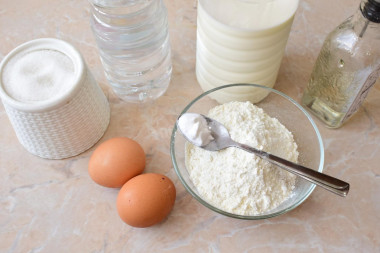
How to make thin pancakes with holes? Prepare everything you need for this. I use milk with 2% fat content, and eggs of category C1. Sift flour through a sieve in advance to saturate it with oxygen.
Step 2:
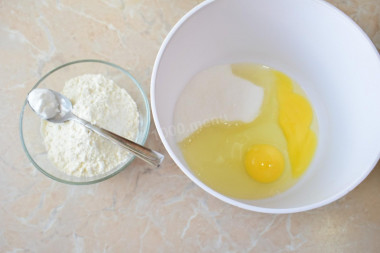
To prepare pancake batter, take a convenient deep bowl so that splashes do not fly out of it when kneading. Combine eggs with sugar and salt in a bowl. In a separate bowl, mix flour with soda.
Step 3:
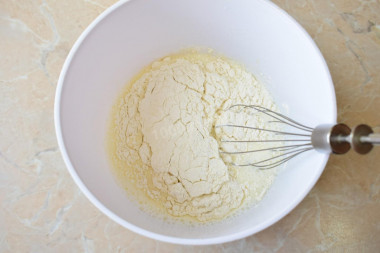
Pour milk into the bowl to the eggs and gradually pour flour with soda, knead the dough.
Step 4:
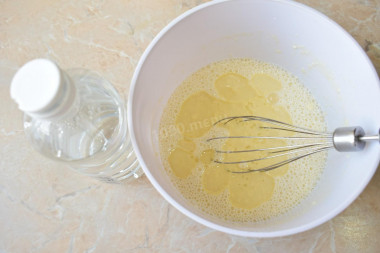
Then mix vegetable oil into the dough and add vinegar. Mix all the ingredients well. To do this, you can use a mixer. The finished dough should be homogeneous, without lumps of flour.
Step 5:
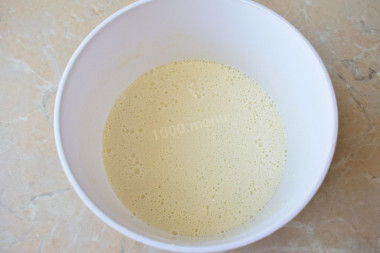
Pancake batter turns out to be quite liquid, which is exactly what it should be for thin pancakes. Let it stand for 5 minutes. In the test, vinegar reacts with soda - bubbles appear on the surface.
Step 6:
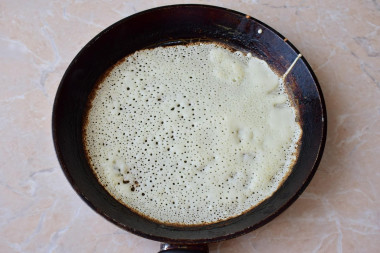
For frying, preheat the pancake pan to a hot state and grease it with a thin layer of vegetable oil. To do this, you can use a napkin or a brush. The pan should be well heated. Quickly pour a thin layer of dough on it. Such thin pancakes are prepared very quickly. Fry the pancakes on both sides until golden brown.
Step 7:
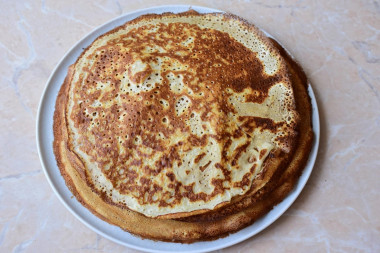
Stack the finished pancakes on top of each other on a separate plate and keep them under the lid so they don't dry.
Step 8:
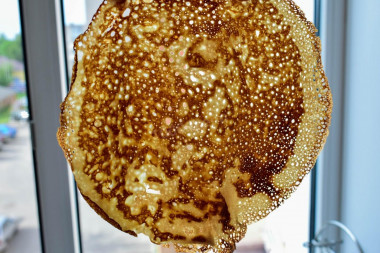
Pancakes are made with a lot of holes. It is not convenient to wrap the filling in them, but dipping in sour cream, condensed milk or jam will be delicious.
Step 9:
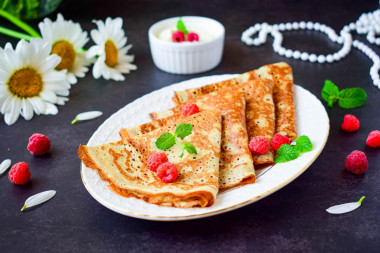
Have a nice treat!
How do I know if the egg is fresh? Break it into a separate container. First of all, there should be no unpleasant smell. The protein of fresh eggs will be transparent and clean. The yolk should not spread and will be shiny, convex, homogeneous.
Be sure to wash the eggs before use, as even the seemingly clean shell may contain harmful bacteria. It is best to use food detergents and a brush.
Be prepared for the fact that flour may need more or less than indicated in the recipe. Focus not on the amount of flour, but on the desired consistency of the dough. To avoid mistakes, read about flour and its properties!
Calorie content of products possible in the composition of the dish
- Whole cow's milk - 68 kcal/100g
- Milk 3.5% fat content - 64 kcal/100g
- Milk 3.2% fat content - 60 kcal/100g
- Milk 1.5% fat content - 47 kcal/100g
- Concentrated milk 7.5% fat content - 140 kcal/100g
- Milk 2.5% fat content - 54 kcal/100g
- Chicken egg - 157 kcal/100g
- Egg white - 45 kcal/100g
- Egg powder - 542 kcal/100g
- Egg yolk - 352 kcal/100g
- Ostrich egg - 118 kcal/100g
- Whole durum wheat flour fortified - 333 kcal/100g
- Whole durum wheat flour, universal - 364 kcal/100g
- Flour krupchatka - 348 kcal/100g
- Flour - 325 kcal/100g
- Granulated sugar - 398 kcal/100g
- Sugar - 398 kcal/100g
- Wine vinegar (3%) - 9 kcal/100g
- Vinegar 9% - 11 kcal/100g
- Balsamic vinegar - 88 kcal/100g
- Apple vinegar - 14 kcal/100g
- Vinegar - 11 kcal/100g
- Vegetable oil - 873 kcal/100g
- Salt - 0 kcal/100g
- Baking soda - 0 kcal/100g

